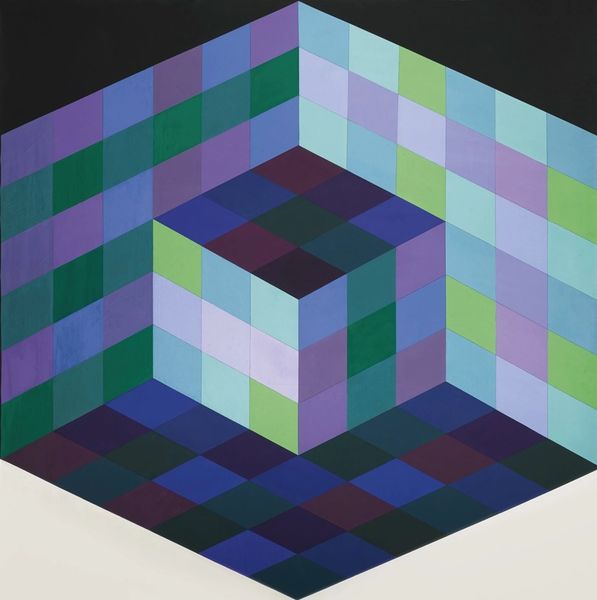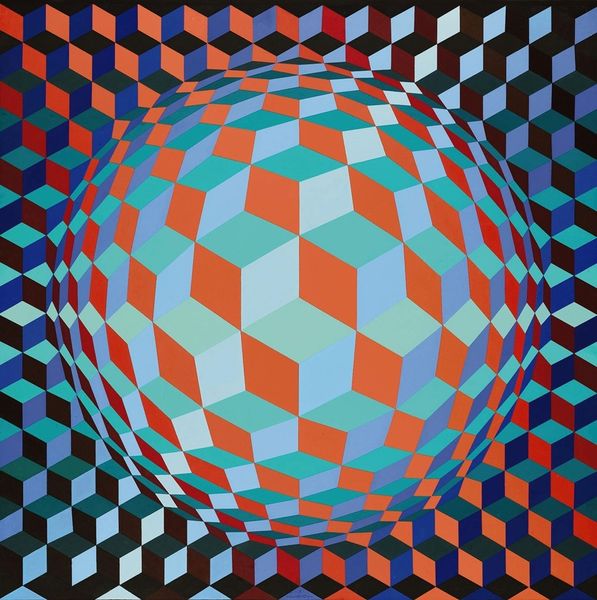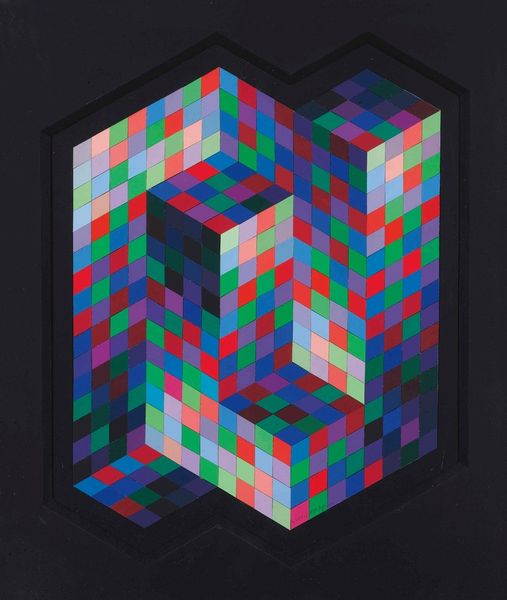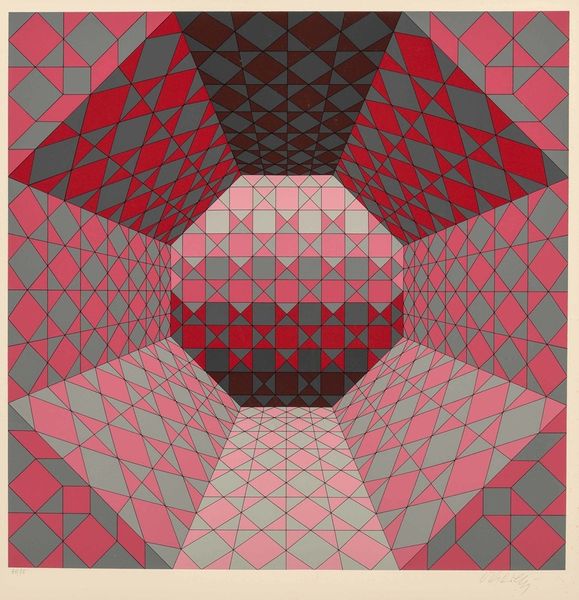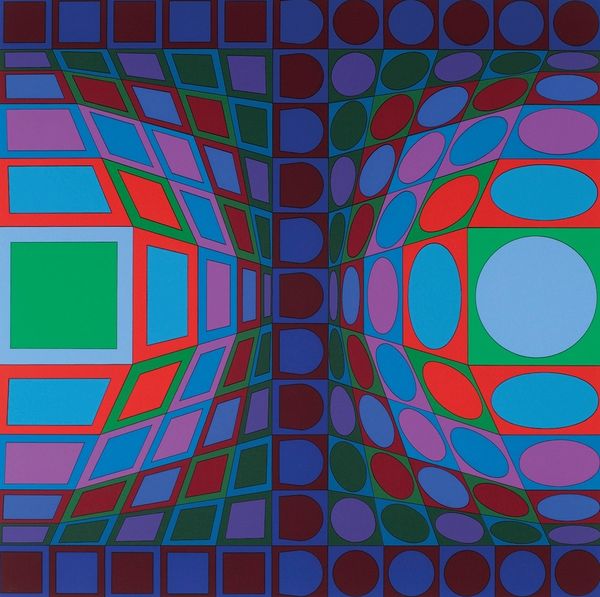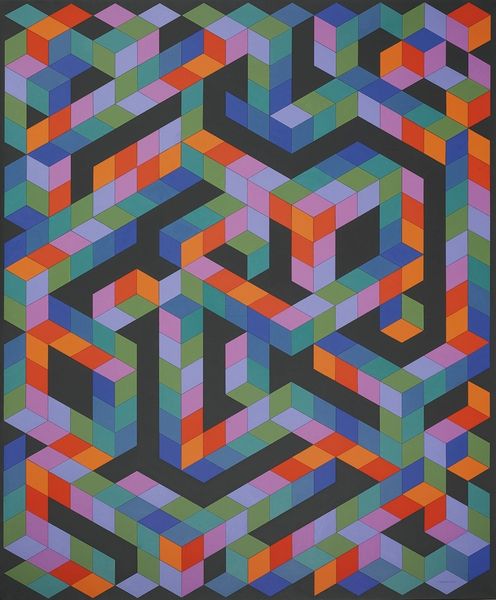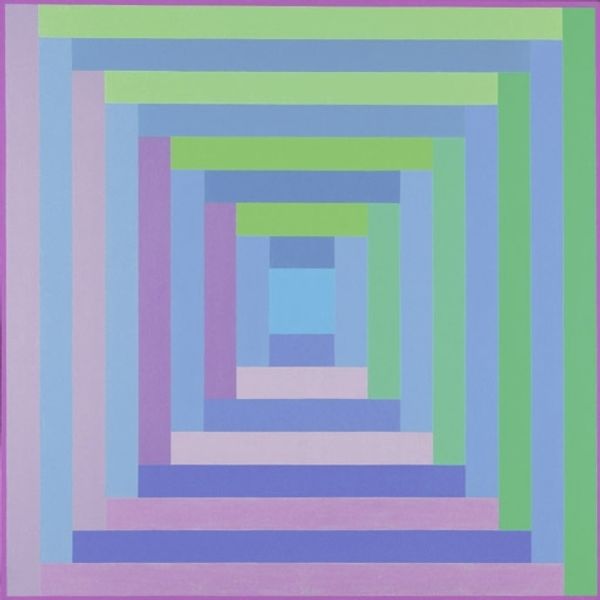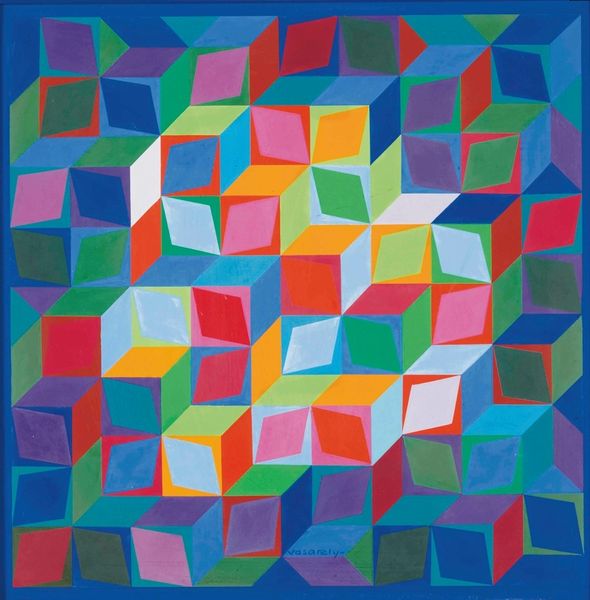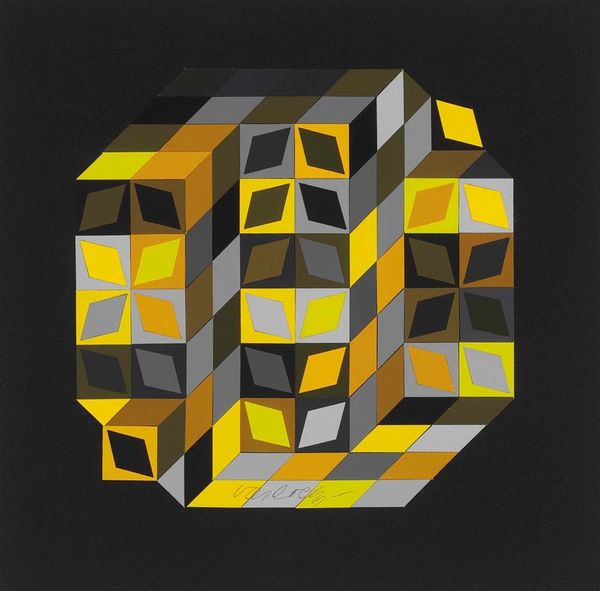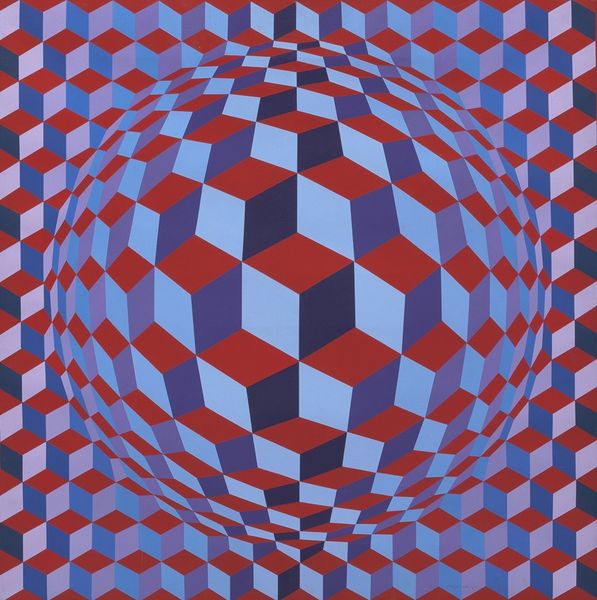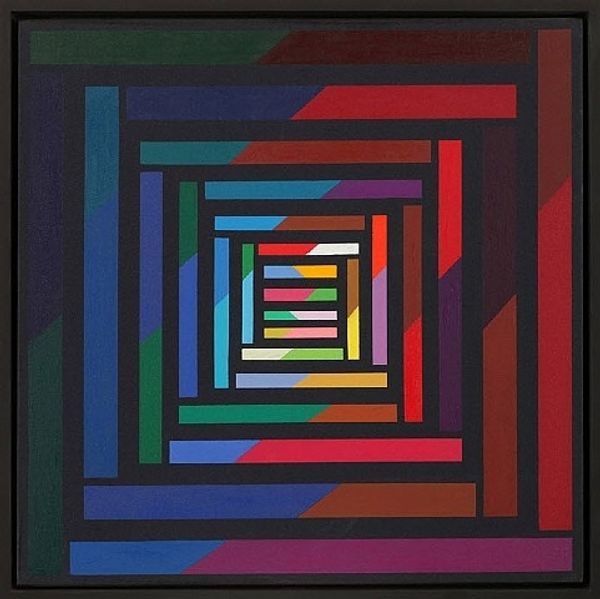
painting
#
op-art
#
painting
#
geometric pattern
#
subtle pattern
#
minimal pattern
#
geometric
#
geometric-abstraction
#
repetition of pattern
#
vertical pattern
#
abstraction
#
pattern repetition
#
layered pattern
#
funky pattern
#
combined pattern
#
modernism
#
repetitive pattern
Copyright: Modern Artists: Artvee
Curator: At first glance, it feels like peering into a strangely tiled abyss. There's an almost unsettling pull into its depths. Editor: We are currently observing Victor Vasarely’s "IGMAND," an acrylic on canvas completed in 1981. Vasarely, a leading figure in Op Art, masterfully manipulates geometric forms. Notice the way the checks diminish toward the painting's center point, creating an illusion of receding space. Curator: The chromatic range is fascinating, too. Why those particular hues, and what effect do they have, do you suppose? Editor: Well, if we examine the symbolic vocabulary that predominated in the 1980s, color functioned to dislocate objective readings, and stimulate subjective responses. Notice how color is deployed—to amplify spatial ambiguities—or deny spatial certainty. In this reading, Vasarely has composed his color as spatial device. Curator: So, if you were to follow this chromatic trail, how do these juxtapositions impact our experience, psychologically or emotionally? Is it purely about the geometry? Editor: I wouldn't dismiss the emotional dimensions. The interplay of colors, such as the soft lavenders next to the more assertive blues, could represent opposing energies held in dynamic tension. This echoes the psychological disorientation Op Art often provokes, unsettling the viewer's perception and prompting contemplation. Consider how the "IGMAND" elicits the sensation of movement, an interplay of advancement and recession. Curator: The longer I look at it, the more that receding void seems to morph into something architectural, like the corner of a very strange, very brightly colored room. Almost suffocating. Editor: Precisely, I read "IGMAND" as the paradox of modernity, representing the fusion of tradition and progress. Curator: Vasarely offers us a paradox within this canvas—an invitation to perceive, question, and ultimately, engage with the dynamic world around us. Editor: Absolutely, and a lasting question regarding the complex dialogue between the rational and the emotive within modern artistic expression.
Comments
No comments
Be the first to comment and join the conversation on the ultimate creative platform.
